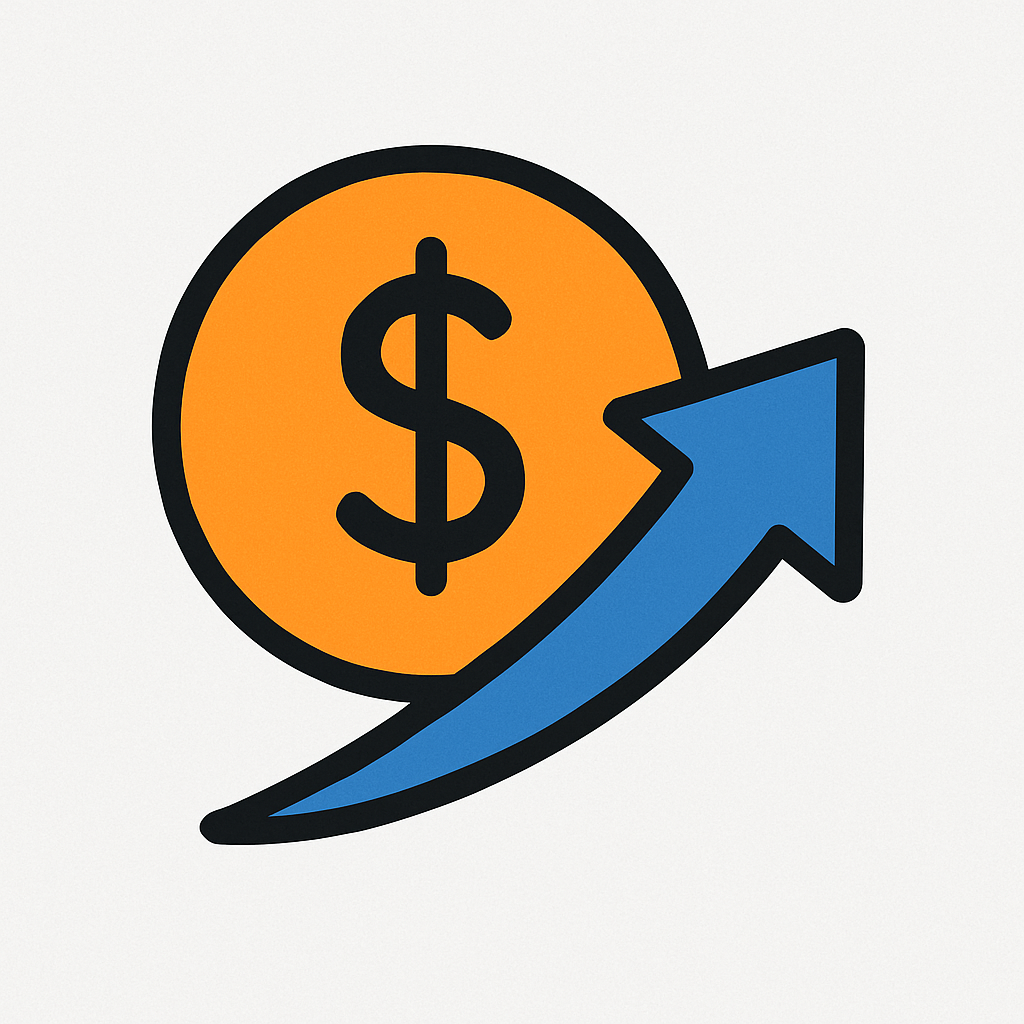Table of Contents
How to Evaluate Dividend Safety: Key Metrics Every Investor Should Know
Dividends are a powerful tool for building wealth and generating passive income—but not all dividends are created equal. A high yield might look attractive, but if it’s not sustainable, you could be left with slashed payouts and falling stock prices.
So how do you know if a dividend is safe?
The key is learning how to evaluate dividend safety using proven financial metrics. In this guide, we’ll walk through what to look for, how to interpret the data, and red flags to avoid.
Why Dividend Safety Matters
A company can only pay dividends consistently if it has strong earnings, solid cash flow, and responsible financial management. When a company overextends itself or faces downturns, it may reduce or eliminate its dividend—often leading to a sharp stock price drop.
For income investors, dividend safety is just as important as the yield itself.
Key Metrics to Evaluate Dividend Safety
Here are the most important metrics every dividend investor should understand:
1. Payout Ratio
The payout ratio tells you what percentage of earnings is being paid out as dividends.
Formula:
Payout Ratio = (Dividends per Share / Earnings per Share) × 100
Ideal Range:
Under 60% is considered safe for most industries. Some sectors like utilities or REITs may run higher.
⚠️ A payout ratio over 80% could be a warning sign unless justified by stable cash flows.
2. Free Cash Flow (FCF) Payout Ratio
Earnings can be manipulated through accounting. That’s why free cash flow—the actual cash left after expenses—is often a better indicator of a company’s ability to pay dividends.
Formula:
FCF Payout Ratio = Dividends / Free Cash Flow
Ideal Range:
Below 70% is typically considered healthy.
3. Dividend Coverage Ratio
This metric flips the payout ratio to show how many times a company can cover its dividend from earnings.
Formula:
Dividend Coverage = Earnings per Share / Dividends per Share
Ideal Range:
A ratio above 2 is considered strong, meaning the company earns twice what it pays out in dividends.
4. Debt-to-Equity Ratio (D/E)
High debt levels can strain a company’s ability to maintain dividends, especially in downturns.
Formula:
Debt-to-Equity = Total Liabilities / Shareholders’ Equity
Ideal Range:
Under 1.5 is preferable, though some capital-intensive industries may carry more.
5. Dividend Growth History
A company that has raised dividends consistently over the years shows financial discipline and confidence in its outlook.
Look for companies with 10+ years of dividend growth—especially those with 25+ years (Dividend Aristocrats).
6. Industry Stability
Some industries are naturally more resilient (e.g., utilities, healthcare, consumer staples). Dividend safety is easier to maintain in sectors with consistent demand.
Avoid sectors with volatile earnings unless you’ve carefully evaluated their payout practices.
7. Earnings Stability and Trends
Steady or growing earnings over time indicate a company can sustain (and increase) its dividends. Check year-over-year earnings trends and avoid companies with major dips or inconsistent profits.
8. Management’s Dividend Policy
Some companies explicitly state their commitment to maintaining or growing dividends. Reading earnings calls and shareholder letters can give insight into management’s intentions.
💡 Tip: Search for phrases like “committed to returning capital to shareholders” or “targeted dividend growth.”
Red Flags That Suggest a Dividend May Be Unsafe
Be cautious if you spot these warning signs:
- Sky-high dividend yield (often over 6%) with no strong financials
- Negative earnings or cash flow
- Recent dividend cuts or freezes
- Unsustainable payout ratios
- Deteriorating debt metrics
High yield doesn’t mean high quality. Always investigate further.
Tools You Can Use
These platforms help you evaluate dividend safety with just a few clicks:
- Simply Safe Dividends – Paid service with dividend safety scores
- Morningstar – Analyst insights and financial ratios
- Seeking Alpha – Dividend grades and peer comparisons
- Yahoo Finance – Free access to payout ratios, earnings, and dividend history
Frequently Asked Questions (FAQs)
What is a good dividend payout ratio?
Generally, under 60% is safe for most industries. Over 80% can be risky unless supported by reliable cash flow.
Are high dividend yields always bad?
Not always—but a high yield often signals risk. Double-check the company’s financial health.
Can a company with losses still pay dividends?
Yes, but it’s not sustainable long-term. Look for positive and growing earnings.
Do all REITs have high payout ratios?
Yes, because REITs are required to distribute at least 90% of taxable income. Evaluate their cash flow instead of net income.
Is dividend safety more important than dividend growth?
They go hand in hand. A safe dividend that grows over time is ideal. Prioritize safety before chasing growth.
Final Thoughts
Dividend investing isn’t just about picking the stock with the biggest yield. It’s about choosing companies that can consistently pay—and grow—those dividends over time.
By using metrics like the payout ratio, free cash flow, and dividend coverage, you can confidently assess whether a dividend is sustainable or at risk. Stay disciplined, avoid red flags, and build your portfolio on a foundation of reliable income and long-term growth.
Because in dividend investing, safety comes before sweetness.
